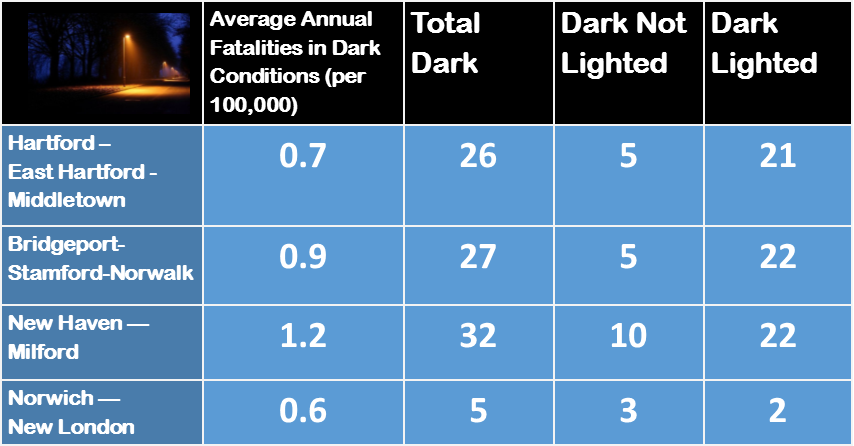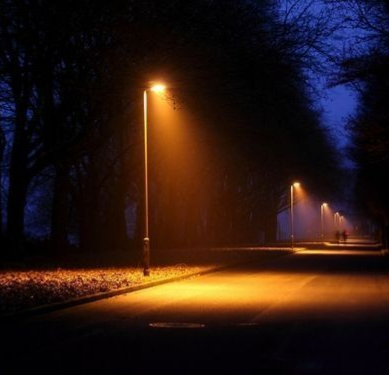Pedestrian, Cyclist Deaths After Dark Rising Nationally; Highest Rate Among CT Metro Areas in New Haven Region
/Across the United States, a total of 4,440 pedestrians and 364 cyclists were killed at night, in dark conditions, in 2017. A new analysis reveals that those after-dark fatalities account for the vast majority of all such fatalities each year. The share of all fatalities occurring in dark conditions is slowly rising, climbing from to nearly 72 percent in 2017 from 67 percent in 2010 and 65 percent in 2007. Roughly a third occur in dark, unlighted conditions, while the other approximately 40 percent are reported near streetlights or other dark, lighted conditions.
The analysis, by GOVERNING magazine, looked at the total pedestrian/cyclist deaths and per capita fatality rates for metropolitan areas with populations exceeding 200,000, including four metro areas in Connecticut, 2015-2017. Total 2015-17 fatalities nationally were 20,004, with 14,153 during hours when it was dark.
The highest number of fatalities in that multi-year period in Connecticut during darkness occurred in the New Haven metropolitan area, 32. The Bridgeport-Norwalk-Stamford region has 27 deaths, the Hartford area had 26. The Norwich-New London region had 5 deaths.
Nationally, pedestrian and cyclist fatalities occurring in all lighting conditions have generally climbed in recent years nationally, but the largest increases are occurring after sunset.
Between 2010 and 2017, annual fatalities in dark conditions (both lighted and unlighted) jumped by 46 percent. Over the same period, they rose only 15 percent in daylight. Totals for dawn (+33 percent) and dusk (+43 percent) lighting conditions also increased significantly, although they accounted for just a few hundred such traffic deaths, GOVERNING reported.
The data breaks down whether the fatality occurred in dark but lighted or dark, unlighted conditions. In each Connecticut metro area, the vast majority occurred in dark but lighted circumstances. The numbers were 22-10 in the New Haven area, 22-5 in the Bridgeport region and 21-5 in the Hartford area.
The analysis used National Highway Traffic Safety Administration data, which records lighting conditions in its traffic fatality database. The federal Office of Management and Budget’s latest definitions for metro areas, current as of September 2018, were used.





























